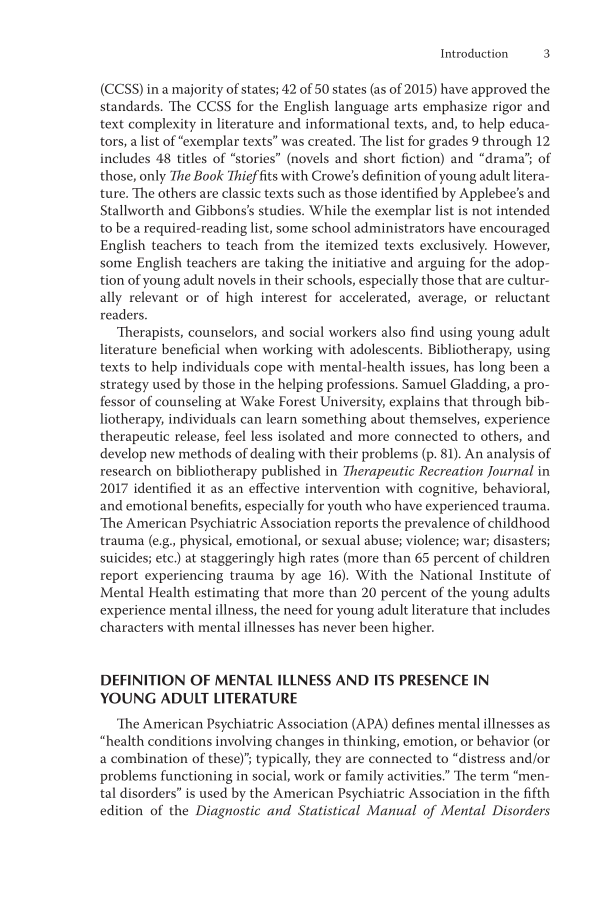Introduction 3 (CCSS) in a majority of states 42 of 50 states (as of 2015) have approved the standards. The CCSS for the English language arts emphasize rigor and text complexity in literature and informational texts, and, to help educa- tors, a list of “exemplar texts” was created. The list for grades 9 through 12 includes 48 titles of “stories” (novels and short fiction) and “drama” of those, only The Book Thief fits with Crowe’s definition of young adult litera- ture. The others are classic texts such as those identified by Applebee’s and Stallworth and Gibbons’s studies. While the exemplar list is not intended to be a required-reading list, some school administrators have encouraged English teachers to teach from the itemized texts exclusively. However, some English teachers are taking the initiative and arguing for the adop- tion of young adult novels in their schools, especially those that are cultur- ally relevant or of high interest for accelerated, average, or reluctant readers. Therapists, counselors, and social workers also find using young adult literature beneficial when working with adolescents. Bibliotherapy, using texts to help individuals cope with mental-health issues, has long been a strategy used by those in the helping professions. Samuel Gladding, a pro- fessor of counseling at Wake Forest University, explains that through bib- liotherapy, individuals can learn something about themselves, experience therapeutic release, feel less isolated and more connected to others, and develop new methods of dealing with their problems (p. 81). An analysis of research on bibliotherapy published in Therapeutic Recreation Journal in 2017 identified it as an effective intervention with cognitive, behavioral, and emotional benefits, especially for youth who have experienced trauma. The American Psychiatric Association reports the prevalence of childhood trauma (e.g., physical, emotional, or sexual abuse violence war disasters suicides etc.) at staggeringly high rates (more than 65 percent of children report experiencing trauma by age 16). With the National Institute of Mental Health estimating that more than 20 percent of the young adults experience mental illness, the need for young adult literature that includes characters with mental illnesses has never been higher. DEFINITION OF MENTAL ILLNESS AND ITS PRESENCE IN YOUNG ADULT LITERATURE The American Psychiatric Association (APA) defines mental illnesses as “health conditions involving changes in thinking, emotion, or behavior (or a combination of these)” typically, they are connected to “distress and/or problems functioning in social, work or family activities.” The term “men- tal disorders” is used by the American Psychiatric Association in the fifth edition of the Diagnostic and Statistical Manual of Mental Disorders
Document Details My Account Print multiple pages
Print
You have printed 0 times in the last 24 hours.
Your print count will reset on at .
You may print 0 more time(s) before then.
You may print a maximum of 0 pages at a time.


































































































































































































































